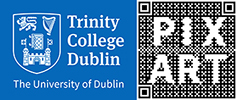Not I VR
Not I VR re-stages Samuel Beckett’s 1972 monologue for a lone, disembodied mouth inside an immersive, single-user virtual-reality installation. The project asks how Beckett’s radically subtractive dramaturgy – extreme darkness, torrent of words, singular, focused scenography – behaves within an additive, real-time engine driven by motion capture, spatial audio, and digital doubles.
